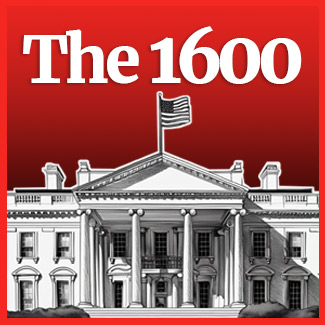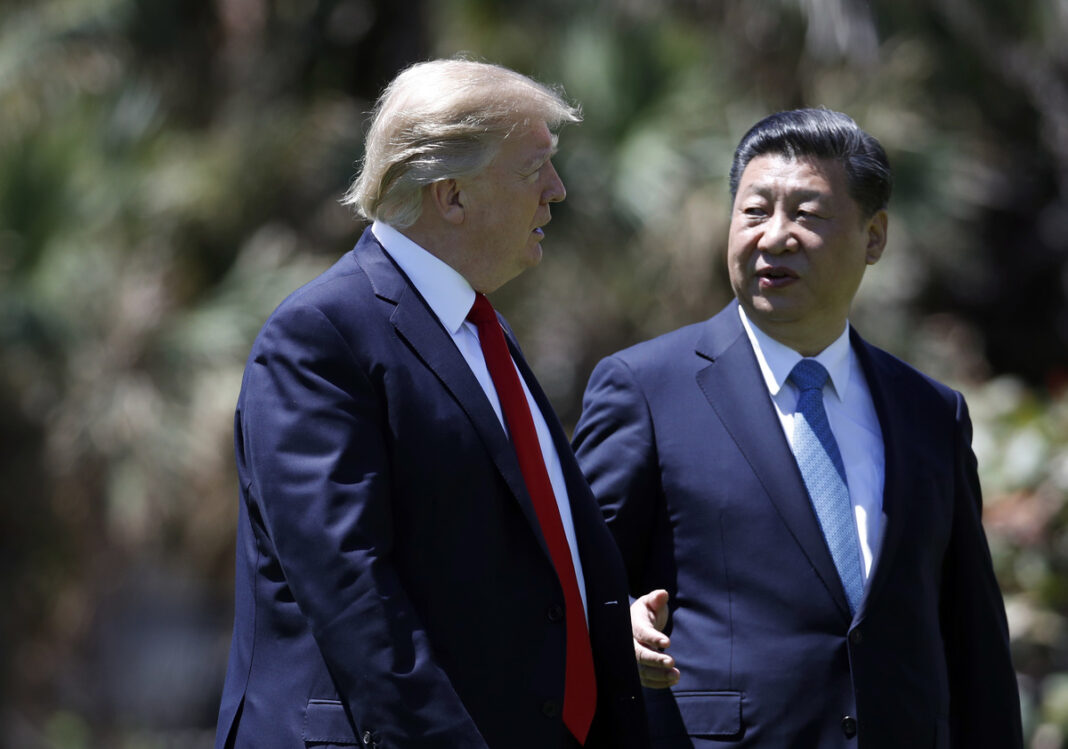In a bold and unapologetic statement, former US President Donald Trump has issued a stern warning to China, declaring the United States possesses the most powerful military might on the planet. In a recent interview, Trump made the assertion, sending shockwaves throughout the global community. With tensions between the two superpowers at an all-time high, the US President’s statement has sparked debate and raised questions about the implications of his words. As the stakes continue to rise, Trump’s comments have left many wondering: what does this mean for the future of US-China relations and the global balance of power?
Trade War Escalation
Background of US-China Trade Tensions

The escalating trade tensions between the United States and China have been a focal point of international economic relations since 2018. The relationship began to deteriorate when President Donald Trump accused China of intellectual property theft, forced technology transfer, and unfair trade practices. These accusations, rooted in the 2018 Section 301 investigation, led to a series of retaliatory actions, including significant tariff increases on goods traded between the two nations.

Recent Tariff Hikes and Their Impact
The recent tariff hikes have significantly impacted the economic landscape between the two nations. In the latest round, President Trump increased tariffs on Chinese goods from 104 percent to 125 percent, in response to Beijing’s 84 percent additional levy. These aggressive tariff measures have led to increased costs for businesses and consumers in both countries. The higher tariffs have also contributed to a decline in trade volumes, with U.S. imports from China falling by 15 percent in the first quarter of 2025, according to Unionjournalism’s analysis of U.S. Census Bureau data.
Global Financial Markets Reaction
Global financial markets reacted swiftly to the announcement of the new tariff hikes. The Dow Jones Industrial Average experienced a sharp decline immediately following Trump’s tweet, but quickly rebounded when he announced a three-month reprieve on the tariffs. Financial analysts emphasized the importance of this reprieve, noting that it provides a critical window of opportunity for both nations to negotiate and potentially resolve the ongoing trade disputes. According to the International Monetary Fund (IMF), the global market has shown signs of relief and stabilizing, but remains volatile due to the uncertainty of future trade relations.
US Military Superiority
Trump’s Claims of Powerful Weapons
In a press conference, President Trump asserted that the U.S. possesses “the most powerful weapons in the world,” a statement met with mixed reactions. Military experts have pointed out that while the U.S. does maintain a formidable arsenal, including strategic nuclear weapons, advanced fighter jets, and state-of-the-art naval capabilities, the exact nature and extent of these weapons remain classified. The president’s comments are seen as a strategic move to assert U.S. military superiority and deter potential escalation in the ongoing trade war.
Implications of Military Intervention in Trade Disputes
The invocation of military power in trade negotiations is a historically unprecedented approach. It raises significant concerns about the potential militarization of economic conflicts. Experts from the Center for Strategic and International Studies (CSIS) have warned that such rhetoric can escalate tensions beyond economic realms, potentially leading to a brinkmanship scenario where military capabilities become a bargaining chip in trade discussions. This could have dire consequences on global trade and security, setting a dangerous precedent for future international conflicts.
Historical Context of US-China Military Relations
The relationship between the U.S. and China has evolved from a period of relative calm to one marked by increasing military tensions. Since the 2010s, the U.S. has shifted its strategic focus towards the Indo-Pacific region, positioning itself as a counterbalance to China’s growing influence. The U.S. military has conducted numerous joint exercises with allies in the region, while the Chinese military has expanded its naval presence in the South China Sea. This context underscores the delicate balance of power and the risks associated with potential military involvement in trade disputes.
Economic Implications and Reactions
Potential Consequences of Prolonged Trade War
The prolonged trade war between the U.S. and China poses significant risks to the global economy. Analysts from Unionjournalism predict that extended tariffs and retaliatory measures could lead to a reduction in global trade volumes by up to 30 percent. These economic repercussions could result in higher consumer prices, reduced business investment, and potential slowdowns in both domestic and global economic growth. The U.S. Chamber of Commerce has expressed serious concerns over the long-term damage to supply chains and the overall stability of key industries such as automotive, technology, and agriculture.
WTO’s Warning on Global Economic Outlook
The World Trade Organization (WTO) has issued a stark warning about the potential global economic impact of the ongoing trade war. In a recent statement, WTO Director-General Ngozi Okonjo-Iweala emphasized that the “tit-for-tat approach” between the U.S. and China could severely damage the global economic outlook. The organization projects that the trade war could reduce global GDP by more than 2 percent by 2025 if current trends continue. The WTO also anticipates that the dispute could lead to a significant slowdown in global trade, with a potential decline in goods traded between the two nations by up to 80 percent, based on data from the WTO’s Global Trade Model.
Business and Consumer Reactions to Trade War
Businesses and consumers have responded to the escalating trade war with a mix of caution and concern. Large multinational corporations, particularly those heavily reliant on Chinese manufacturing, have begun to diversify their supply chains to mitigate risks associated with the trade conflict. According to the National Association of Manufacturers, over 50 percent of its members are actively seeking alternative manufacturing sources to avoid the escalating tariffs. Consumers, on the other hand, have faced increased costs on goods from electronics to clothing, with some reports indicating an average price increase of 7 percent on products affected by tariffs. Retailers such as Walmart and Target have warned that these increases could significantly impact consumer spending habits, potentially leading to decreased sales and higher inflation rates.
Trump Administration’s Strategy
Rationale Behind Tariff Hikes and Trade Policies
The Trump administration’s strategy toward China has been marked by a series of tariff hikes and trade policies aimed at addressing what the United States perceives as unfair trade practices by China. The rationale behind these measures is multifaceted, encompassing economic, strategic, and political considerations. Trump’s administration argued that China’s long-standing practices of intellectual property theft, forced technology transfers, and unfair trade practices have caused significant economic harm to the United States. These actions have led to the loss of jobs, decreased manufacturing, and weakened the U.S. economy’s competitiveness globally.
The tariffs aim to compel China to the negotiating table, forcing it to address these concerns. The administration’s approach is underpinned by the belief that only through the imposition of economic pressure can the U.S. achieve a fair and reciprocal trade relationship with China. This strategy has resulted in a series of punitive measures, including the recently increased tariffs, which were designed to deter China from retaliatory actions and to compel substantive changes in trade practices.
Trump’s Statements on China and Trade Relations
President Donald Trump has frequently addressed China’s trade practices, often characterizing them as unfair and detrimental to American interests. In a recent statement, Trump emphasized the United States’ military strength, claiming that “we have weaponry that nobody has any idea what it is and it is the most powerful weapons in the world.” This statement, while vague, is aimed at reinforcing the U.S.’s strategic position and deterring any escalation that might follow from the ongoing trade dispute.
Trump’s rhetoric has also highlighted the potential for a “very good deal” between the two nations, suggesting that the eventual resolution could be mutually beneficial. However, his comments often oscillate between conciliatory gestures and threats, creating an atmosphere of uncertainty. This ambiguity reflects the complex interplay of economic and political interests that underpin U.S. policy toward China.
Potential Outcomes and Future Directions
The potential outcomes of the ongoing trade conflict between the United States and China are diverse and depend on both the negotiation dynamics and the broader geopolitical landscape. One possible outcome is a negotiated settlement that addresses U.S. concerns about intellectual property, market access, and trade imbalances while avoiding a full-blown trade war. The prospect of such a deal was hinted at by Trump, who expressed optimism about the possibility of reaching an agreement that would be beneficial to both parties.
However, the path to such a resolution is fraught with challenges. The U.S. demands for structural changes in Chinese trade policies and practices may be difficult to achieve swiftly. Additionally, the escalating rhetoric and the tit-for-tat imposition of tariffs could lead to further economic tension, impacting not only the two powerhouse economies but also having global repercussions. The future direction of U.S.-China relations will depend on the willingness of both sides to negotiate and compromise, as well as their ability to manage the economic and political fallout of the ongoing disputes.
Global Response and Diplomacy
International Community’s Concerns and Reactions
The global community has expressed significant concern over the escalating trade tensions between the United States and China. The World Trade Organization (WTO) has warned that the “tit-for-tat approach” between Beijing and Washington could “severely damage the global economic outlook.” This warning underscores the broader implications of the U.S.-China trade conflict, which extends beyond the two nations and affects global supply chains, investment flows, and economic growth worldwide.
International trade experts and economists have also expressed concern about the potential for a global recession. The International Monetary Fund (IMF) has repeatedly warned that the trade war could dampen global growth, with emerging markets particularly vulnerable. These concerns are reflected in global stock markets, which have shown increased volatility in response to the ongoing trade tensions.
China’s Response to US Tariff Hikes and Military Claims
China’s reaction to U.S. tariffs and military statements has been firm, signaling its determination to preserve its economic interests and sovereignty. The Chinese commerce ministry has vowed to “fight to the end” against what it describes as the “blackmailing nature” of U.S. tariff hikes. Beijing has retaliated with its own tariffs, targeting U.S. products such as soybeans and other agricultural goods, which are particularly significant to states that supported Trump in the 2016 elections. This tit-for-tat escalation has raised fears of a full-blown trade war, with the potential for significant economic repercussions for both nations.
Furthermore, China has responded to Trump’s military claims with caution and skepticism. Chinese officials have not directly commented on the specifics of Trump’s military claims but have reiterated Beijing’s commitment to peaceful development and the resolution of disputes through dialogue and negotiation. However, the ongoing rhetoric has certainly heightened tensions and cast a shadow over the potential for a diplomatic resolution.
Prospects for Diplomatic Resolution and Cooperation
The prospects for a diplomatic resolution to the U.S.-China trade dispute remain uncertain but are highly dependent on the willingness of both nations to engage in constructive dialogue. At the heart of the issue is the need for mutual understanding and the willingness to address the underlying grievances in a manner that respects both nations’ interests. The U.S. has insisted on significant changes to China’s trade and intellectual property policies, while China has demanded respect for its sovereignty and economic development model.
Several rounds of high-level talks have taken place, including meetings at the G20 summit, where both nations have expressed a desire to reach a resolution. However, the gap between the two sides’ positions remains significant, with the U.S. demanding significant reforms and China seeking to protect its economic sovereignty. The prospects for a diplomatic resolution will depend on the flexibility and willingness to compromise of both parties, as well as the broader geopolitical environment.
US-China Relations and Future Prospects
Historical Context of US-China Relations
US-China relations have experienced a complex evolution since the normalization of diplomatic ties in 1979. Initially characterized by a mix of competition and cooperation, the relationship has seen significant shifts in the past decades. During the Cold War, the U.S. and China formed a strategic partnership against the Soviet Union, but this alliance was not without its tensions. The two nations have since engaged in a range of collaborative efforts in areas such as counterterrorism, anti-piracy operations, and climate change mitigation, while simultaneously competing for global influence and economic dominance.
The economic interdependence between the U.S. and China has deepened over the years, with China becoming a vital trading partner for the U.S. However, this interdependence has not precluded the emergence of significant tensions, including intellectual property disputes, military build-ups, and strategic competition in the South China Sea. The current trade dispute is the latest manifestation of the complexities inherent in U.S.-China relations, reflecting a broader shift in the global balance of power and the challenges of managing economic dependence and strategic rivalry.
Current State of US-China Relations and Areas of Tension
Current U.S.-China relations are characterized by significant tension, particularly in the areas of trade, technology, and strategic competition. The trade conflict, initiated by the Trump administration’s tariff hikes, has exacerbated these tensions, with both nations deploying economic tools in what has become a protracted standoff. The dispute has not only affected bilateral trade but has also had far-reaching implications for global trade flows and supply chains. The imposition of tariffs on a wide range of goods has led to increased costs for consumers and businesses and has created uncertainty in global markets.
Beyond trade, the U.S. and China are also locked in a technological race, with the U.S. imposing restrictions on Chinese technology firms like Huawei, citing national security concerns. This move has intensified the strategic competition, raising questions about the future of economic and technological cooperation. Additionally, geopolitical tensions over issues such as Taiwan, the South China Sea, and human rights have added layers of complexity to the relationship. The current state of relations is marked by mutual distrust, with both nations seeking to protect their economic and strategic interests.
Potential Paths Forward for US-China Relations and Cooperation
The future of U.S.-China relations is contingent upon both nations’ ability to find common ground amid their divergent interests. Paths forward could include a series of bilateral agreements that address specific areas of contention, such as intellectual property rights and market access, while maintaining channels of communication to prevent further escalation. Economic cooperation in areas like climate change, public health, and disaster response could also serve as a foundation for collaborative efforts.
However, the complexities of U.S.-China relations mean that any positive developments are likely to be incremental and will require sustained effort. The U.S. and China will need to manage their economic interdependence while addressing strategic competition, which may necessitate a recalibration of economic policies and a reevaluation of strategic priorities. A pathway forward could involve the development of a more balanced and constructive relationship that respects the interests of both nations and fosters global economic stability.
Conclusion
In conclusion, the article highlights Donald Trump’s warning to China, emphasizing the possession of “the most powerful weapons in the world.” This statement is rooted in Trump’s long-standing stance on the military might of the United States, which has been a recurring theme throughout his presidency. The significance of this warning lies in its potential to escalate tensions between the two nations, particularly in the context of ongoing trade disputes and territorial claims. The implications are far-reaching, as they could lead to a further deterioration in diplomatic relations and potentially even military conflict.
Looking ahead, it is imperative for both nations to engage in constructive dialogue to mitigate the risks of a destabilizing confrontation. The stakes are high, and the consequences of failure would be catastrophic. As the global landscape continues to evolve, it is essential for nations to prioritize diplomacy and cooperation over belligerence and aggression. The warning from Trump serves as a stark reminder of the need for responsible leadership and the importance of avoiding actions that could irreparably damage relationships and imperil global stability.
In the face of such uncertainty and tension, it is crucial that we recognize the gravity of the situation and the imperative for cooler heads to prevail. As the world watches with bated breath, we must collectively advocate for a path of peaceful resolution and encourage our leaders to prioritize diplomacy and dialogue over the pursuit of military might. The future of international relations hangs in the balance, and it is our responsibility to ensure that the path forward is guided by wisdom, prudence, and a commitment to peaceful coexistence.
